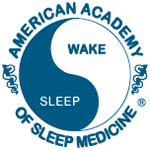 In 1977 the AASM accredited the first sleep disorders center. Today there are 1,825 AASM-accredited sleep centers and labs.
In 1977 the AASM accredited the first sleep disorders center. Today there are 1,825 AASM-accredited sleep centers and labs.They are providing trusted medical care for people with sleep problems in every part of the country. From coast to coast and Alaska to Hawaii, you can find an AASM-accredited sleep center near you.
Recently the AASM also has accredited a few sleep centers outside the U.S. This includes facilities in Canada and one in Guam.
What is the value of AASM accreditation? It lets you know that a sleep center or lab maintains the highest standards of quality. Applicants have to make the grade in areas such as testing procedures, patient safety and staff training.
AASM accreditation also ensures that you receive expert care. AASM-accredited sleep centers and labs are required to have a board-certified sleep specialist as the medical director.
What is the difference between a sleep center and a sleep lab? A sleep center provides testing and treatments for all sleep disorders. These include obstructive sleep apnea, restless legs syndrome and narcolepsy.
A sleep lab also provides testing for all sleep disorders. But labs only treat breathing problems such as sleep apnea and snoring.
How can you find an AASM-accredited sleep center or lab near you? The easiest way is to go to www.sleepcenters.org.
The Web site has a directory that enables you to search by state. Each center and lab in the directory has met the AASM’s high standards for accreditation.


























